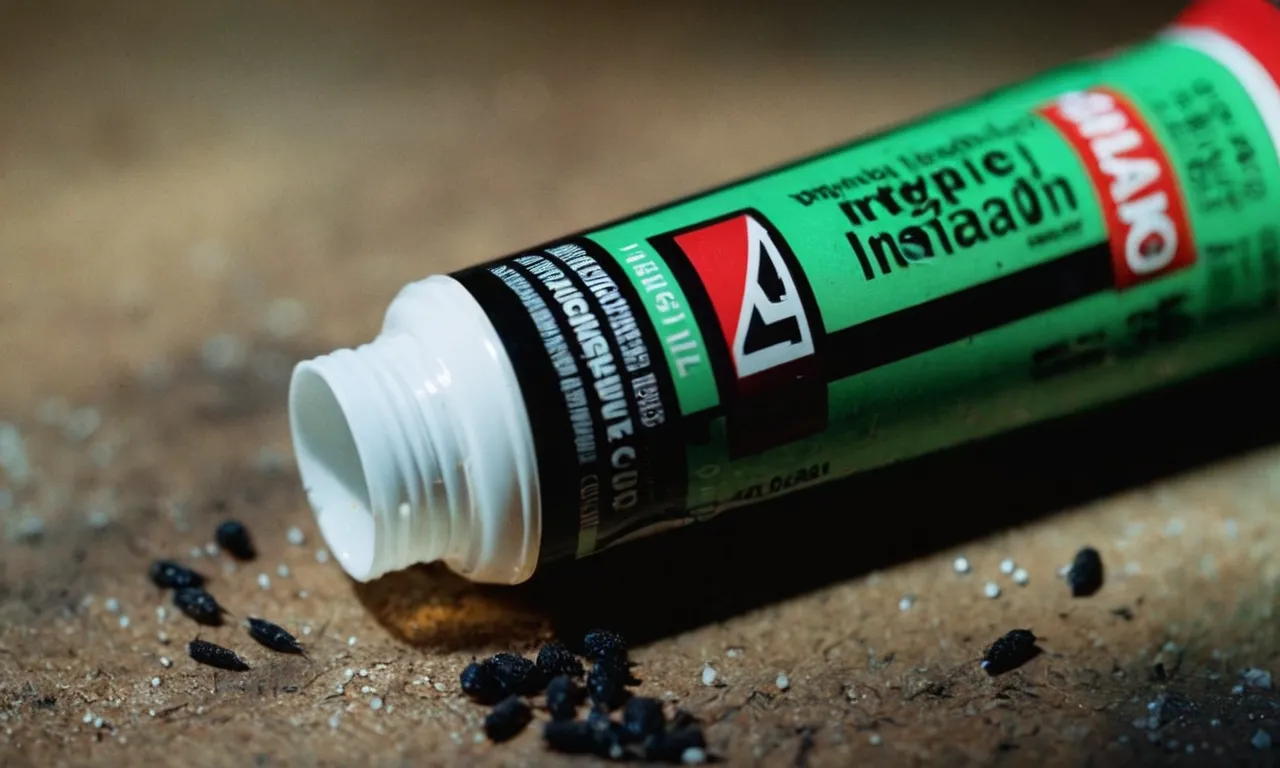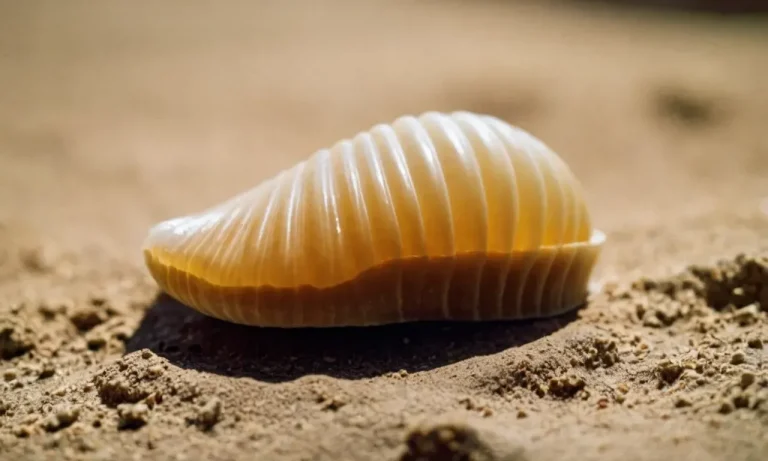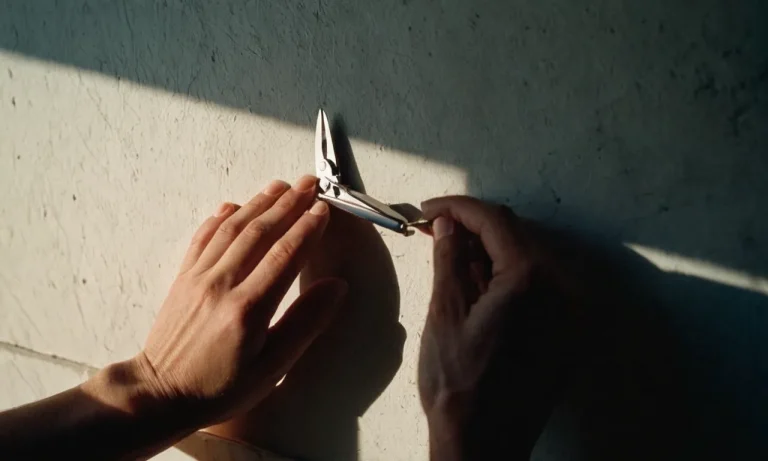Does Liquid Nails Go Bad? Everything You Need To Know
If you have a tube of liquid nails adhesive sitting in your workshop or garage, you may be wondering – does this stuff ever go bad? With some glues and adhesives, they can lose effectiveness or even dry out over time.
Knowing the shelf life of liquid nails can help you avoid frustrations and problems down the road.
If you’re short on time, here’s a quick answer to your question: Yes, liquid nails does expire and go bad eventually. An unopened tube generally lasts 1-2 years. Once opened, liquid nails will last about 6 months before drying out. But proper storage can extend its shelf life.
What is Liquid Nails?
Overview and uses
Liquid Nails is a versatile construction adhesive made by the company Liquid Nails. It is designed to bond various building materials like wood, drywall, concrete, tile, paneling, and more. Liquid Nails comes in tubes, cans, and larger cartridges for use with caulking guns.
It creates a strong, long-lasting bond that can withstand weather, moisture, and heavy use.
Some of the most common uses for Liquid Nails include:
- Installing crown molding, baseboards, wainscoting and other trim
- Attaching drywall to wood or metal studs
- Securing plywood or paneling to walls and ceilings
- Gluing down wood flooring
- Setting ceramic, stone, or porcelain tiles
- Anchoring furniture to surfaces
Liquid Nails adhesive eliminates the need for nails and screws in many situations. It creates an incredibly strong bond and can be used for interior and exterior applications. Handymen, contractors, and do-it-yourselfers rely on it for a wide variety of projects.
Types/varieties
Liquid Nails offers several different formulations tailored to specific uses:
- Liquid Nails Heavy Duty Construction Adhesive – The original multi-purpose formula, bonds to most common building materials.
- Liquid Nails for Subfloors & Decks – Creates a moisture-resistant bond ideal for plywood and pressure-treated lumber.
- Liquid Nails Paneling & Molding – Designed for fast grab onto wood surfaces with minimal bracing required.
- Liquid Nails Fuze It – All-surface adhesive with incredibly strong holding power.
- Liquid Nails Projects Construction Adhesive – Bonds lightweight materials like trim, wainscotting and corkboard.
- Liquid Nails Flooring Adhesive – Flexible formula specifically made for installing hardwood, laminate and parquet floors.
They also offer exterior-grade, ceramic tile, and clear drying formulas for specialized situations. Having the right Liquid Nails product for your specific project helps ensure you get an incredibly robust, lasting bond.
Key properties
Here are some of the stand-out features that make Liquid Nails such a versatile, high-performing construction adhesive:
- Bonds to a wide variety of common building materials like wood, concrete, drywall, tile, and metal.
- Forms water-resistant and weatherproof joints suitable for indoor and outdoor use.
- Strong adhesive properties provide a durable, long-lasting bond.
- Some formulas allow for fast grab and load bearing in as little as 30 minutes.
- Can be used for horizontal, vertical, and overhead applications.
- Product remains flexible when dry and won’t crack or become brittle.
- Low VOC content makes it safe for interior use.
- Tube sizes allow for easy squeeze application and less mess.
With strengths up to 1700 lbs per square inch depending on the formula, Liquid Nails offers industrial-level bonding power in easy-to-use packages for DIYers. It’s versatility, strength, and durability make it a go-to product for a wide variety of jobs.
How Long Does Liquid Nails Last?
Unopened Shelf Life
When unopened and stored properly, Liquid Nails has an exceptionally long shelf life. The manufacturer states that an unopened tube can last up to 15 years from the production date if stored in a cool, dry place between 40-80°F.
This extended shelf life is thanks to the product’s water-based latex formula. As long as the moisture doesn’t evaporate over time, the adhesive properties remain intact.
That said, the shelf life can vary quite a bit depending on storage conditions. Heat, humidity, and temperature fluctuations can shorten the lifespan. Direct sunlight or excessively hot storage can cause the latex to prematurely dry out.
Try to keep unopened tubes in a controlled, moderate environment for maximum freshness.
Opened/In-Use Shelf Life
Once opened, Liquid Nails has a much shorter lifespan. Exposure to air causes the latex formula to start curing. Properly stored, an opened tube will generally last at least 2 years from the date of opening.
With regular use, most standard 10 oz tubes provide enough adhesive for approximately 30-60 projects before drying up.
Here are some signs that opened Liquid Nails may be expiring:
- Thickening of the consistency
- Reduced tackiness
- Weakened bonding strength
- Foul odor
If you notice these issues, it’s time to replace the adhesive.
Proper Storage for Maximizing Shelf Life
To get the most out of your Liquid Nails investment, focus on proper storage:
- Moderate temperatures – Store at 40-80°F. Avoid excessive heat or freezing.
- Low humidity – High moisture can compromise the latex formula.
- Airtight container – Keep opened tubes tightly sealed between uses.
- No direct sunlight – UV rays can degrade the adhesive.
- Smooth, clean rim – Wipe each tube’s opening before resealing to prevent drying.
- Upright position – Store tubes vertically to avoid leaks.
Adhering to these guidelines, an unopened tube of Liquid Nails can remain usable for over a decade. Even opened tubes can last years with proper storage. Just check the product occasionally for any signs of drying out or underperformance.
With minimal care, you can rely on Liquid Nails for numerous projects to come!
Signs That Liquid Nails Has Gone Bad
Thickening/Drying Out
One of the most common signs of liquid nails going bad is a change in viscosity. Over time, the adhesive can start to thicken and dry out due to evaporation of solvents or chemical changes. You may notice the liquid nails becomes thicker, more paste-like, and less pourable.
Extreme thickening can get to the point where the adhesive is completely solidified or dried out into an unusable solid chunk.
Thickening and drying is accelerated if the tube or cartridge was left open and exposed to air over a long period. However, thickening can happen even in unopened tubes stored for too long past the shelf life.
If you need to vigorously squeeze the tube to get the adhesive flowing, that likely means drying and thickening has occurred.
Loss of Tackiness
Along with thickening, old liquid nails may start to lose its tackiness and bonding capability. Adhesives achieve strong bonds because of tackifying resins and polymers. As these components degrade over time, the liquid nails loses its stickiness.
You may notice the aged adhesive does not stick well to surfaces on contact. When pressed between two items, it may slide instead of providing an instant tacky grip. Loss of tackiness prevents effective bonds, so such liquid nails will fail to set and cure properly.
Weakened Bond Strength
The ultimate test of whether liquid nails has expired is if it provides a tight bond between materials. Even if the product looks and feels fine, degraded polymers and volatile compounds can prevent full strength bonding.
Old liquid nails may seem to setup and dry like new adhesive, but the connection can be incomplete and brittle.
To test bond strength, apply aged liquid nails between two small boards or other materials. After full cure time (24 hours), pull the pieces apart to check if the adhesive holds tight. Compare this to fresh liquid nails to determine if bonding capacity has reduced over time.
According to BobVila.com, even unopened liquid nails should be replaced after 2-3 years from manufacture date for best bond performance.
What to Do with Old Liquid Nails
Test on scrap material
Before throwing out that old tube of liquid nails, first try testing it on a scrap piece of material to see if it still works properly. Squeeze out a small amount and check that it spreads smoothly and dries to a tacky consistency within the expected timeframe listed on the product packaging.
If it seems too thick, stringy, or dries improperly, then it’s time to dispose of it. But you may find that even months or years past the expiration date, liquid nails can still get the job done!
Safely dispose
If your tests determine the adhesive is no longer usable, be sure to safely dispose of it. Don’t simply throw the tube in the regular trash can. Liquid nails contain chemicals like toluene, petroleum distillates, and ethyl acetate which can be hazardous in large quantities.
Check if your community has a household hazardous waste collection program that accepts construction adhesives and sealants. Or you can allow the product to fully dry out before placing its emptied tube in your normal weekly rubbish collection.
Buy fresh tubes
The easiest route is to just purchase a new tube of liquid nails for your next DIY project. They typically only cost $5-15 depending on size and formulation. Buying fresh means you can feel confident in the adhesive’s bonding strength instead of taking a gamble on an expired old tube.
Visit your local hardware store or check online at Home Depot to view the range of options. Popular picks include Liquid Nails Heavy Duty Construction Adhesive and Liquid Nails Fuze*It All Surface Construction Adhesive.
Conclusion
To recap, liquid nails adhesive does have a shelf life and can go bad over time. Unopened tubes typically last 1-2 years, while opened tubes expire after about 6 months. With proper storage, you may be able to extend the lifespan somewhat.
Check for signs of drying out, loss of tackiness, and poor adhesion before using old liquid nails for your projects. If in doubt, it’s best to grab a fresh tube to avoid headaches down the road.
Knowing when your liquid nails may start underperforming can save you from failed projects and unnecessary frustration. Just be sure to store it properly, keep an eye on the age, and test old adhesive before relying on it for important jobs.







